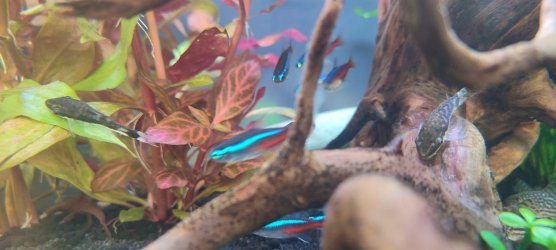Hi everyone,
I have some issues with one kind of my fish has a redness around its mouth. 2 of them died like 2 weeks ago for unknown reasons
one of cories I think has columnaris, The tank is second week with antibiotics
other fish are fine.
dead fishes was the same kind as this one
I have 120ltr tank
PH 7.2
Temp 23C
Very soft water
no nitrites, nitrates or ammonia
tank contains live plants, some tetras, fiew cories, shrimps and 2 plecos L010a
sub - fluval stratum + black sand very fine
I have some issues with one kind of my fish has a redness around its mouth. 2 of them died like 2 weeks ago for unknown reasons
one of cories I think has columnaris, The tank is second week with antibiotics
other fish are fine.
dead fishes was the same kind as this one
I have 120ltr tank
PH 7.2
Temp 23C
Very soft water
no nitrites, nitrates or ammonia
tank contains live plants, some tetras, fiew cories, shrimps and 2 plecos L010a
sub - fluval stratum + black sand very fine

![IMG_20240410_181129[1].jpg](/data/attachments/179/179057-a39921f7c70cdf8b956e64b9df08f42f.jpg)
![IMG_20240410_181121[1].jpg](/data/attachments/179/179058-4d84463cae3a2f06d79dbdcd216298ca.jpg)
![IMG_20240402_142040[1].jpg](/data/attachments/179/179059-38f798cb41019bffaae0aef2e97930b4.jpg)

